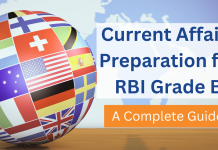Why in News?
On 11 January 2021, the Reserve Bank of India (RBI) released the 22nd issue of the Financial Stability Report (FSR). The report is published bi-annually and reflects an assessment of the Sub-Committee of the Financial Stability and Development Council (FSDC) on the risks to financial stability.
Highlights of the Financial Stability Report (FSR) 2021
- Policy actions were aimed at restoring normal functioning and mitigating stress in the initial phase of the COVID-19 pandemic; now the focus is on supporting recovery and preserving the solvency of businesses and households.
- Positive vaccine development news has underpinned optimism about the outlook, although it is marred by the second virus wave, including more virulent strains.
- The smooth functioning of domestic markets and financial institutions has been ensured by policy measures by regulators and the government; managing market volatility amid rising spillovers has become challenging, particularly when movements in certain segments of the financial markets are not in line with developments in the real sector.
- Bank credit growth has remained subdued, with moderation across bank groups being broad-based.
- Banks’ performance parameters have improved significantly, helped by extended regulatory dispensations in response to the COVID-19 pandemic.
- The capital ratio of Scheduled Commercial Banks (SCBs) to risk-weighted assets (CRAR) improved from 14.7 percent in March 2020 to 15.8 percent in September 2020, while their gross non-performing asset (GNPA) ratio decreased from 8.4 percent to 7.5 percent, and the provision coverage ratio (PCR) improved from 66.2 percent to 72.4 percent over this period.
- Macro stress tests incorporating the first advance estimate of the gross domestic product (GDP) for 2020-21 released on 7 January 2021 indicate that under the baseline scenario, the GNPA ratio of all SCBs may rise from 7.5% in September 2020 to 13.5% by September 2021; under a severe stress scenario, the ratio may rise to 14.8%. This highlights the need for adequate capital to be proactively built to withstand possible deterioration in the quality of assets.
- Analysis of the network shows that total bilateral exposures among financial system entities increased marginally during the quarter ended September 2020. As the inter-bank market continues to shrink and banks are better capitalized, the risk of contagion to the banking system has decreased compared to March 2020 under different scenarios.
Complete FSR 2021 Analysis
To know the complete FSR, the Macro-Financial Risks, Domestic Economy and Markets, Financial Institutions, Regulatory Initiatives and Other Developments in the Financial Sector, Assessment of Systemic Risk and other important questions for objective and descriptive FM based on it click on the link below.
RBI Grade B 2021 : Objective and Descriptive FM | Financial Stability Report | Jan 2021
ixamBee can help you to process these details with ease with BeePedia (available for free on a weekly as well as monthly basis). BeePedia is a comprehensive document to address the General Awareness (GA) content requirement.
BeePedia covers Current Affairs, Banking Awareness, Economic news updates and Financial news updates, weekly Current Affairs, Banking Awareness, the updates from various government ministries and Press Information Bureau (PIB). It also covers the relevant static information related to the current affairs/news to provide you the convenience of all related information at one place.
Also Read:
RBI Grade B 2021: How to Approach ESI Descriptive Paper?
Achieve the Perfect Score – 30 out of 30 in Quant!
Get Free Online Test Series, GK updates in form of Beepedia, as well as latest updates for Bank PO, Bank Clerk, SSC, RBI, NABARD and Other Government Jobs.
деньги в займ онлайн на картузайм на вебмани с формальным аттестатомполучить быстрый займ на карту













